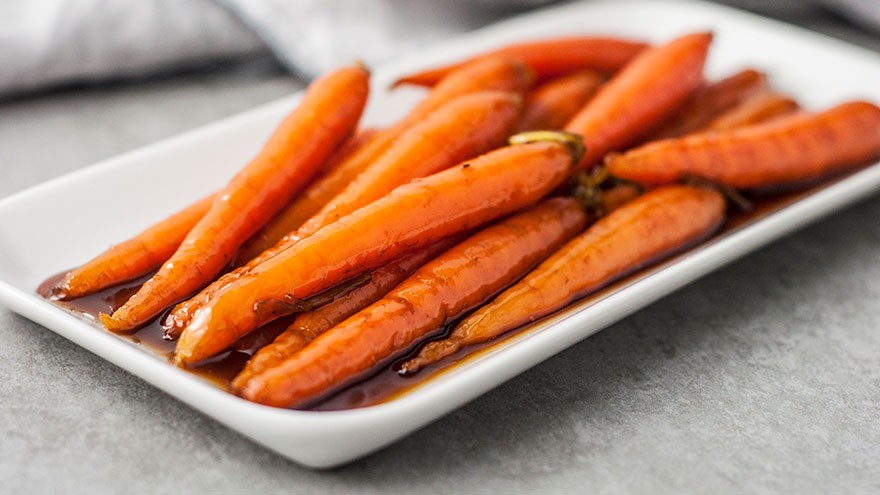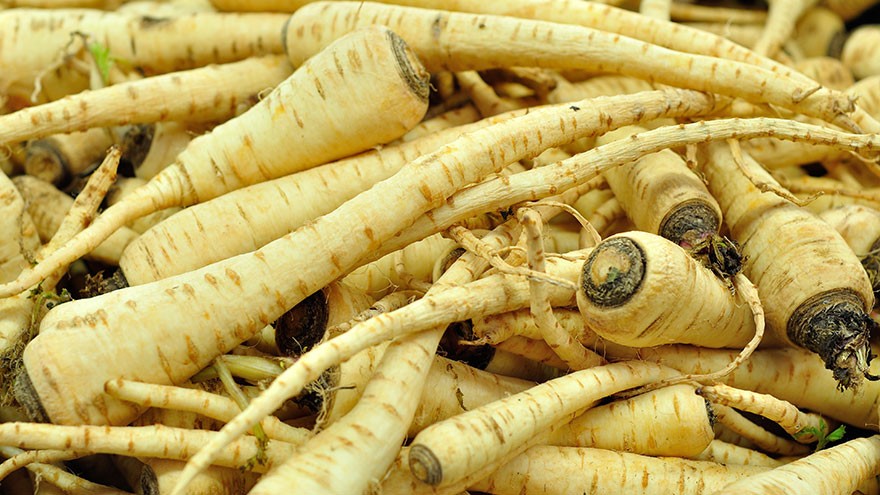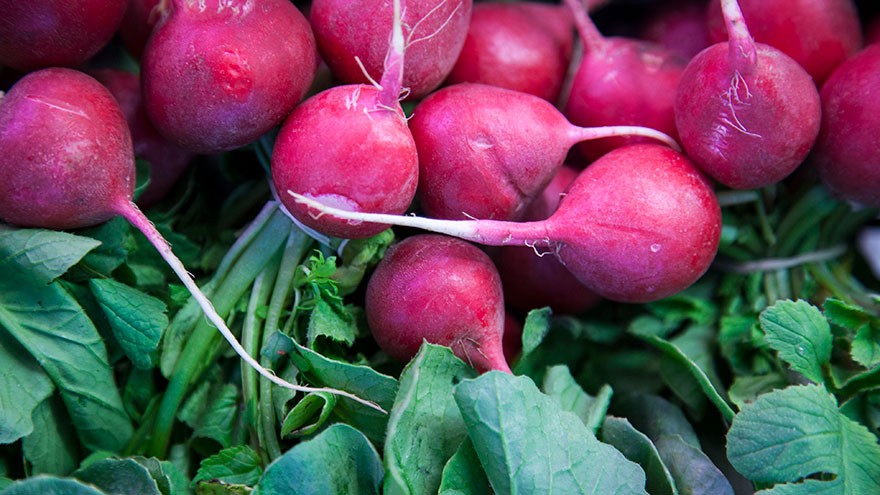Exploring Root Vegetables
Although exotic produce from warmer climes can add fun and interest to winter meals, there is something comforting and natural about clinging to winter produce during the cold, grey days at this time of year.
The fresh produce you’ll find locally is almost all root crops: Carrots, parsnips, beets, rutabagas, and turnips, being some of the most commonly found.
Root Vegetables
Carrots
Carrots come in many varieties, from fat vegetables no longer than a child’s finger to carrots that are 12 inches long (and longer) with the classic tapered look. Although most are orange, carrots also come in golden colors, white, red, and purple. Orange carrots are an excellent source of vitamin A, and all carrots are a good source of vitamins K and C.
When shopping, look for crisp carrots; if they are limp, they’ve lost much of their flavor also avoid cracked or dry-looking carrots or carrots with their tops removed that have darkly colored stem butts. If the greens are attached, they should be bright green, feathery, and not overly limp.

Carrots can be used in innumerable ways, but it’s usually best to leave their skins on. Scrub them up well and then grate them into salads or baked goods, chop into salads, stews, and soups, or blanche or roast them as a stand alone dish. Don’t throw away carrot greens, either. They make great additions to salads, soups, and stews.
Parsnips
Parsnips are an under-rated vegetable. Those who do not care much for carrots, turnips, and other common root vegetables are often pleasantly surprised to find they love the delicate flavor of parsnips. This delectable veggie is a great source of fiber, calcium, phosphorus, magnesium, and – especially – potassium.
Select parsnips that aren’t too large, as size indicates age and old parsnips are usually tough. Parsnips greens should look feathery and not dried out.

Parsnips make a great addition to stews and soups, and are excellent roasted. Try layering slices of parsnips beneath chicken breasts or a whole bird before roasting. Or serve them mashed, in lieu of mashed potatoes. Many cooks remove the skins, but in doing so they remove many excellent nutrients. Save young, small parsnips for eating raw like a carrot.
Turnips
Many people think they dislike turnips, but this is often because they’ve tried large, old turnips (which have a bitter flavor) or they’ve only eaten them raw. For most palates, cooked turnips are better-tasting. Turnips are good for you, too, containing plenty of calcium, phosphorus, and potassium.
Choose turnips about the size of a tennis ball, for best flavor. The greens should be bright and feathery, and there should be no cracks anywhere on the vegetable.

Usually the skins – which can be rather tough – are removed before cooking. Try boiling and mashing them, much like you would potatoes. Some people like to add a little sugar, too. Sliced turnips make a good addition to a roasted vegetable mix, stews, or soups. And don’t forget to save turnip greens for adding to your favorite dishes, too. If you want to eat them raw, choose young, small turnips.
Be sure to also check out Our Deer’s turnip recipe.
Beets
Many Americans aren’t familiar with well-prepared beets. If you’ve ever eaten canned beets, know that cooked beets taste entirely different. Beets add a slightly sweet, unique flavor to many dishes, and are well worth exploring if you’ve never cooked with them before. Beets are also an excellent source of folate and manganese.
Medium-sized beets usually have the best flavor. While shopping, look for beets that have crisp, fresh-looking green tops.

Sliced beets make an excellent addition to soups and strew, or roast or boil them as a side dish. Some chefs prefer to remove the skin of beets, but it’s best to do this after cooking, if you wish to maintain the lovely color of the vegetable.
Like carrot greens, beet greens are great in salads, or steam or sauté them, or add them to soups and stews.
Check out the video version of this article on YouTube : Exploring Root Vegetables

